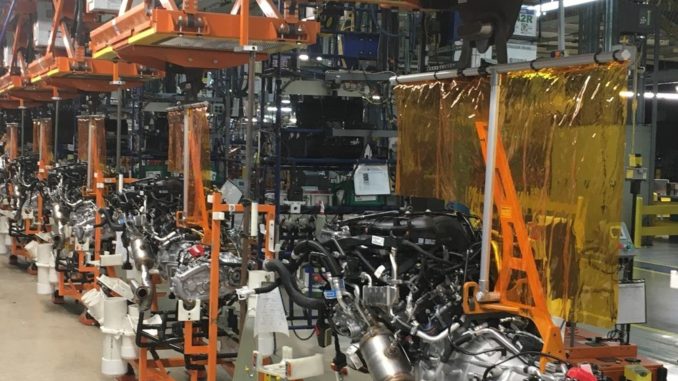
Many manufacturers are cautiously optimistic as factories reopen
By Terry Troy
Thousands of autoworkers are returning to work in Ohio as major automotive manufacturers, including Honda, Ford, General Motors and FCA, are opening back up, albeit under strict COVID-safety guidelines.
With major plants in Avon Lake, Cleveland and Lima, Ford has incorporated no-touch doors, is requiring the use of personal protective equipment like masks and shields and is installing barriers where employees must work closely together. The company is also using thermal scans for employees for fevers and will perform regular and heavy sanitizing of work areas.
Other automakers are doing much the same. Fiat Chrysler Automobiles, which has extensive operations in the Toledo area, opens its doors this week following strict guidelines while General Motors, with a huge stamping plant in Parma, is “following procedures that meet or exceed CDC and WHO guidelines,” the company said in a prepared statement.
Meanwhile smaller manufacturing companies, many of which remained opened during the lockdown due to their essential status, are bullish that manufacturing, the backbone of our state and nation’s economy, will be back up and producing at near full capacity in no time.
Across the state, Governor Mike DeWine opened manufacturing up last week, regardless of whether the enterprise was deemed essential or not. The Ohio Manufacturers’ Association, which represents more than 1,500 companies, estimates that more than three-quarters of its members have remained open during the shutdown. Many implemented new safety protocols during that time, except where safety of the worker is an issue.
Manufacturers were able to remain either fully or at least partially open because they serve diverse industries, says Greg Knox, owner of Knox Machinery in Franklin, whose company supplies the industry with CNC products and CNC manufacturing solutions.
“A lot of manufacturing companies were able to stay open because many of us are doing work for medical, defense and other industries that were deemed essential,” says Knox, who serves on the AMT’s (Association for Manufacturing Technolog) Economic Forecasting Committee, the national organization that tracks U.S. machine tool consumption orders. “I talk to a ton of shops on a weekly basis, and probably 90% of the shops we call on stayed open in some capacity during the shutdown. But there are some that have been shuttered the whole time.”
The consensus among manufacturers, says Knox, is that the current economic downturn comes at a time when the underpinnings of the national economy are essentially sound. Rebound, especially in the manufacturing sector, should be swift.
“The last downturn we had in 2009 came at a time when we had a pretty unstable economy with the housing boom, toxic mortgages and the dot.com crash,” says Knox. “There was a lot going on and it took us a few years to rebound.
“The prevailing sentiment on this downturn is that it should be a V-shaped curve. We went into this very rapidly, but the underpinnings of our economy were very solid going in,” Knox adds. “The moves our government and this administration have made with the stimulus and bail-out package came with amazing alacrity for the U.S. government.”
While optimistic about a speedy return, Knox did admit that his optimism does come with a few caveats, particularly about consumer spending, which plays so large a role in our economy. However, there is bound to be plenty of pent-up demand when it comes to consumer spending, he notes.
“It all comes down to how quickly consumers come back out and the manner in which we let them come back out,” says Knox. “The longer you keep things locked down, the longer it is going to take to climb back up the other side of that V-shaped curve.”
